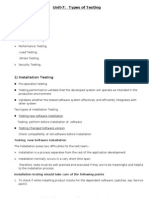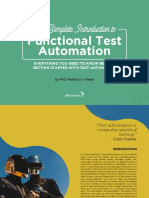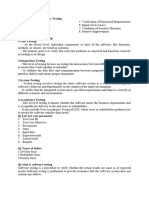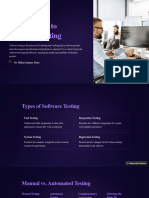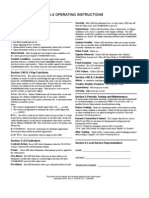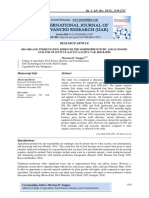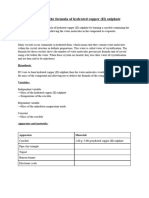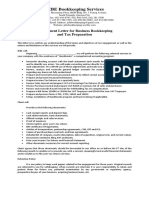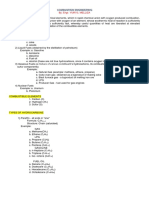0% found this document useful (0 votes)
4 views12 pagesRegression Testing
Regression testing ensures that recent code changes do not disrupt existing software functionality, typically using automated methods for efficiency. The process involves selecting test cases, organizing them into suites, executing tests, and investigating any discrepancies. Regular regression testing is essential for maintaining software stability and reliability after changes.
Uploaded by
alejan1balCopyright
© © All Rights Reserved
We take content rights seriously. If you suspect this is your content, claim it here.
Available Formats
Download as PDF, TXT or read online on Scribd
0% found this document useful (0 votes)
4 views12 pagesRegression Testing
Regression testing ensures that recent code changes do not disrupt existing software functionality, typically using automated methods for efficiency. The process involves selecting test cases, organizing them into suites, executing tests, and investigating any discrepancies. Regular regression testing is essential for maintaining software stability and reliability after changes.
Uploaded by
alejan1balCopyright
© © All Rights Reserved
We take content rights seriously. If you suspect this is your content, claim it here.
Available Formats
Download as PDF, TXT or read online on Scribd
/ 12






